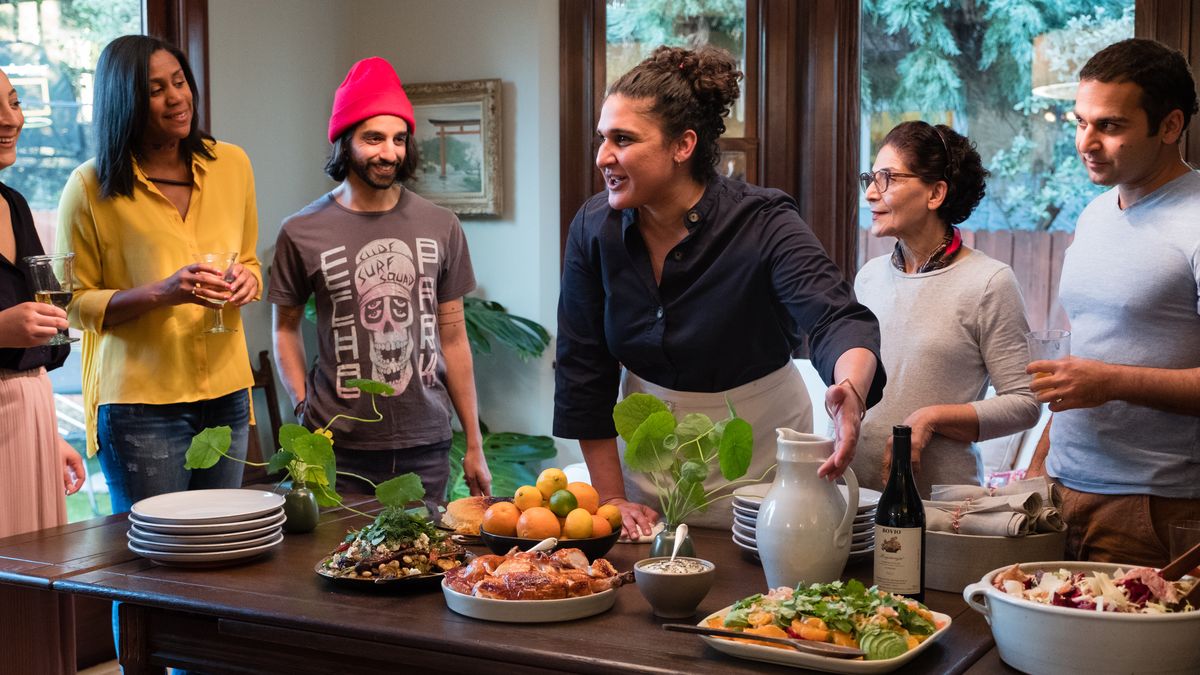Nigella Lawson called her debut cookbook “important.” Yotam Ottolenghi deemed it “modern in its simplicity,” at the same time as Ruby Tandoh learned more “in 15 minutes than from an entire life of trial and blunders”. It’s honest to say that Salt, Fat, Acid, Heat – the debut cookbook from California-based total chef and creator Samin Nosrat – broke a new floor when it hit cabinets in 2017.
The e-book changed into a labor of affection (“It took me almost three years to write the primary four chapters,” says Samin) and units out her philosophy: that all people can prepare dinner well if they learn to stabilize the four essential factors of the name. It’s approximately trusting your senses and instincts instead of sticking rigidly to a recipe so that you can become that infuriating person who seems at half of an empty refrigerator and may magic up a delicious dinner out of seemingly nothing.

Since then, it’s been made into a successful 4-element Netflix series and received numerous awards. So while Leiths School of Food and Wine announced that Samin could be coaching a cooking class in London, Stylist became first in line for what became out to be a riotous evening of hilarious anecdotes, cooking advice, restaurant hints (her all-time favorite is London’s Rochelle Canteen) and the high-quality inexperienced beans we’ve ever tasted (the name of the game? Slow-prepare dinner them in garlic for two hours). Here are the pointers we’ll be imposing at domestic immediately.
The mandoline is your secret weapon (but with remarkable power comes tremendous obligation)
While your Spiralizer can be languishing in a drawer, and that avocado masher was regarded as this sort of first-rate concept at the time turned into unavoidably usurped with the aid of a fork, the mandoline is one tool worth investing in. It can shave fennel and julienne carrots and prep your veg in a double brief time; however, it could also slice your finger open if you’re not cautious.
The Japanese mandoline is a genuinely top-notch, inexpensive device for shaving things,” says Samin. The secret is to create a flat edge to paintings, which frequently reduces your vegetable in half. “I didn’t do this with a butternut squash once and had to go the emergency room and get 26 stitches.” Consider us warned. Use the finger guard and take it slowly if you’d, as a substitute, be ingesting potato dauphinoise rather than spending the night in A&E.
Not all salts are created identically.
Salt is salt. So when a recipe insists on flaky sea salt, all we should hand is Saxa; we will replace one for the other, can’t we? Wrong. Regular table salt can flavor two to a few times as salty because of the flaked range, so while a recipe asks for one teaspoon of salt, “it’s meaningless,” says Samin. Taste your salts und, understand how salty they’re, and regulate while you prepare dinner to achieve the correct stage of saltiness. “Apart from the crazy handful of salt I put in pasta water, my recommendation is not to use greater salt; it’s to use salt better and to realize while you’re including it and in what shape.” Salt your meals best and early, and also, you’ll emerge as including much less on the desk.
Where there’s salt, there shouldn’t automatically be pepper.
While you’ll have difficulty finding a dining desk in Britain that doesn’t have a trusty salt and pepper shaker, the two shouldn’t automatically go together. It’s a specific bugbear of Samin’s. “I don’t hate pepper; I love pepper; I am simply particular about wherein pepper ought to be,” she says.
To me, pepper is a spice, and I’m careful about which spices and herbs I use based totally on which usa and which cuisine’s meals I’m cooking.” In Mexico, it’s not unusual to provide salt and chili flakes on the desk, as an example, even as Morocco favors salt and cumin. Salt is usually key for bringing out the flavor, but adopt other seasonings to the food you’re preparing.